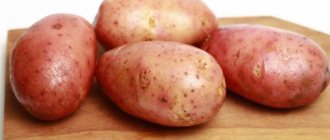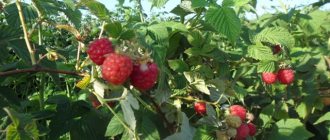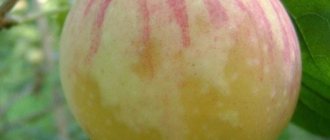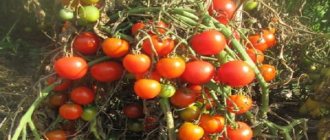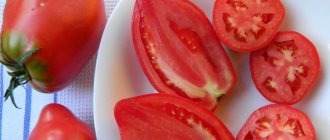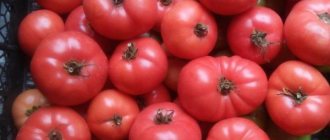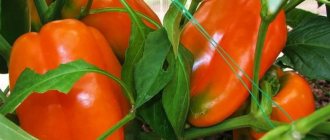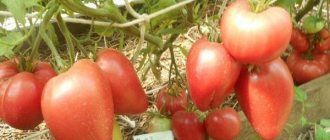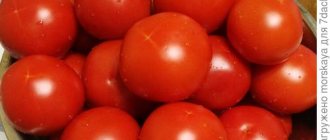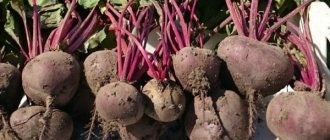History of selection of a remontant variety
The Augustovskoye Miracle variety was selected at the Kokinsky stronghold, operating on the basis of the Bryansk State Agricultural Academy. It is one of the high-yielding large-fruited varieties of remontant raspberries, bred by the famous domestic breeder, Academician Ivan Vasilyevich Kazakov, and the plant is excellent for growing in central Russia.
Did you know? For his work on developing new remontant raspberry varieties that produce a harvest of sweet berries from the end of July until frost, I. V. Kazakov was awarded the gold medal named after. I.V. Michurina.
Cleopatra
Cleopatra is a summer raspberry variety obtained at the Horticulture Research Institute named after. I.V. Michurina based on the varieties: Maroseyka, Obilnaya, Barnaulskaya. The berries are medium-sized (3-4 g, maximum 5 g), conical in shape, with homogeneous drupes well interlocked with each other. The flesh is tender but dense. The taste is sweet and sour with a faint raspberry aroma. The tasting score is high and amounts to 4.6 points. Productivity is high (up to 4.0 kg per bush). The bushes are powerful, straight-growing, slightly spreading. Young shoots are brown, flexible, thorny only at the base. Two-year-olds are brown with a slight waxy coating, thorny along the entire length of the shoot. Shoot-forming ability is average. The variety does not “spread” across the site, but there is enough growth for breeding. Resistance to frost, pests and diseases is high. In terms of ripening time, Cleopatra is a mid-season variety and is recommended for cultivation in the central black earth region.
Characteristics, description
The variety forms compact, medium-spreading bushes, 1-1.8 m high, with dark green leaves. Fruiting occurs on the upper half of the thorny, low branches. This is a remontant variety, the peculiarity of which is the ability to bear fruit 2 times per season. The second fruiting begins in the first half of August, for which the variety got its name.
Large conical berries weigh 6–8 g, have a red color and a pleasant raspberry aroma and sweet taste. Fruiting is extended, and ripened fruits can remain on the bushes for a long time without losing their qualities. They have universal use, are suitable for freezing, drying, various preparations and fresh consumption, and tolerate transportation well. The variety has high frost resistance and is resistant to fungal diseases.
Advantages and disadvantages
- From the detailed description of the berry plant - raspberry, the August miracle may interest gardeners in the following qualities:
- early fruiting on annual shoots;
- large, tasty fruits;
- transportability of berries;
- tolerates winters well;
- ease of reproduction;
- not affected by diseases and pests.
- There are very few disadvantages:
- presence of thorns;
- forms a lot of shoots.
Did you know? Raspberries are among the foods that help fight depression, improve mood, and neutralize the effects of stress. Bananas, pears, and barberries have the same properties.
Drought resistance, frost resistance
An undoubted advantage is that the variety has excellent plasticity and adapts well to different conditions. Due to its high frost resistance (up to -29°C) and early fruiting, this remontant raspberry is grown in the Urals and Siberia. But in these parts it should be covered with a layer of mulch for the winter, and pruning should be done in the spring.
Since this variety, like any raspberry, has roots on the surface, its drought resistance is low. The crop requires regular watering during drought.
Video: Raspberry variety Augustovskoye Miracle
Productivity and fruiting
This is a high-yielding variety that produces up to 4–6 kg of fruit per bush. Ripening occurs in two waves - in mid-summer and in the second ten days of August. It can bear fruit on annual shoots, like all remontant varieties. Fruiting lasts for a long time, until the onset of frost. To ensure abundant formation of the future harvest, all branches are cut off at the beginning of autumn.
Description of the variety
The creator of the remontant raspberry variety Orange Miracle is the Russian breeder of the Kokinsky stronghold VSTISP in the Bryansk region I.V. Kazakov. Since 2009, this raspberry has been registered in the state register.
- Orange miracle is a remontant, large-fruited, productive variety, the productivity and taste of the fruits of which largely depend on the weather and area of cultivation. Due to the yellow color of the fruit it is considered hypoallergenic;
- The bush is massive, moderately spreading, grows in a bouquet. The shoots are covered with thorns along the entire length, grow up to 180 cm, bend downwards under the weight of the harvest, swaying in the wind can damage neighboring branches and numerous berry clusters;
- leaves are medium-sized, bright green, wrinkled, jagged along the edges;
- when grown with two harvests, the first ripe berries appear in mid-July, but the bush is overcome by pests, and therefore the first harvest is meager and not always of high quality, and the second time the fruits begin to set on new shoots from the end of August or the beginning of September, but they have time to ripen only 30-40% of the ovary. Therefore, the most productive is the annual cultivation of these raspberries, when the berries ripen from mid-August until the first snow. Most of the fruit and berry crops in the garden have already borne fruit, and sweet, juicy raspberries are just in time. In addition, by autumn, most pests reduce their activity, which means that the raspberry bush will produce a harvest with virtually no losses;
- On average, 4-4-5 kg are collected from one bush. raspberries In large horticultural farms in Russia, Orange Miracle raspberries are practically not grown; they are cultivated by amateur gardeners for personal use and for sale on the market.
Advantages of the variety
- large fruit;
- high productivity;
- hypoallergenic berries;
- good transportability;
- high frost resistance;
- decorative appearance of a bush;
- life cycle of a shrub up to 15 years;
- good immunity to pests and most diseases.
Disadvantages of the variety
- the presence of thorns on the shoots;
- poor tolerance to drought;
- the need to tie bushes to trellises;
- weak immunity to gray rot.
Landing Features
Planting remontant raspberries of the Augustovskoe Miracle variety is not much different from planting ordinary raspberries.
Deadlines
In the northern regions, raspberries should be planted in the spring, before the buds open, so that by the beginning of winter the plant will take root well and take root. In the middle zone and in the south, it is permissible to plant seedlings in the fall, after the leaves have fallen, but no later than a month before the onset of frost . Plants with a closed root system can be planted in the summer, but such seedlings need to be properly cared for - shaded from the hot sun and watered, not allowing the soil to dry out.
Video: Features of planting and caring for remontant raspberries
Choosing a suitable location
Raspberries of the Augustovskoe Miracle variety are planted in a well-lit area. Lowlands with accumulation of cold air and precipitation and proximity to groundwater should be avoided. The latter should be no closer than one meter to the surface of the earth.
Important! It is better not to plant raspberry bushes next to or after blackberries. Nightshade crops are bad predecessors for raspberries.
Raspberries prefer loose fertile soils with a neutral or slightly acidic reaction (from 5.8 pH to 6.7 pH). Soils that are too acidic should be limed. It is recommended to apply humus, potassium and phosphorus fertilizers to the planting site in advance, or sow a potential raspberry garden with green manure.
Raspberries can be “returned” to the same place no earlier than after three years
Selection and preparation of planting material
It should be noted that you need to purchase seedlings from well-established sellers or specialized nurseries. When purchasing, you need to carefully examine the root system. It must be sufficiently developed and have a length of about 20 cm, and the cross-section of the root must be at least 5 mm.
Also find out why raspberry leaves turn yellow.
The roots should be free of damage and signs of rot or other diseases. If you cut off a bud from planting material, it should not be dried out. The bark will help make sure that the seedling is fresh - the inner layer should have a green color.
24 hours before planting, the root system of the planting material is placed in a solution with the addition of a growth stimulator - for better root formation
Planting scheme
The landing process occurs as follows:
- Dig holes measuring 0.4 × 0.4 m. An interval of 0.6–0.8 m is maintained between them. A distance of 1.5 m is maintained between rows.
- A mound of nutrient soil is poured into the hole, and a prepared seedling is placed on top of it.
- The roots are carefully straightened and covered with soil, leaving the root collar at ground level.
- The soil around the bush is well compacted.
- Watering is carried out (at the rate of 3 liters of water for each bush).
It is recommended to immediately mulch planted seedlings
Choosing a landing site
Raspberries prefer areas with fertile light soil and constant lighting.
More on the topic: Remontant raspberry Daughter of Hercules
With a lack of light, young shoots become very elongated, shading the fruiting ones. The growth period of the shoots is delayed, and they do not have time to prepare for winter. When shaded, lateral fruit branches also lengthen the growth period and the beginning of berry ripening.
As a result of poor lighting, the vital processes of the plant are disrupted, and they become less resistant to pests and diseases, and the quality of the berries decreases sharply.
Raspberries develop best on loam, which allows moisture to pass through well with the reaction of the soil solution within the pH range of 5.5-6. Soils containing less than 14 mg/100 g of phosphorus and potassium are poorly supplied with these elements; more than 25 mg is good.
The groundwater level should be at least 1-1.5 m. Coarse river sand is added to heavy clay soil. Sandy soils are fertilized with humus or peat.
Soils that are too acidic are not suitable for growing raspberries. The addition of lime and dolomite will help improve their composition.
Important! August miracle raspberries are not planted after tomatoes, peppers and potatoes.
Before planting raspberries, the area is dug up and rye, lupine or other green manure is planted on it. They are embedded in the ground a month before planting the main crop. Instead of green manure per 1 m2 use:
- 2 buckets of humus,
- 300 g of complex fertilizer containing potassium and phosphorus.
It is best to place the raspberry plant on a hill. In lowlands, plants are exposed to moisture and cold air.
Rules of care
In order for raspberries to please you with a large number of large berries, you need to organize proper care for them. The remontant raspberry variety Augustov Miracle needs to be well watered . The ground should be saturated with moisture by 0.3-0.4 m. During the warm period, plantings are watered once every 7 days. In hot and dry weather, the amount of watering is increased - 2 times a week.
Important! You need to loosen the bushes shallowly and carefully, trying not to damage the root system, which is located close to the surface.
Be sure to ensure that the soil does not dry out. It is especially important to control the degree of soil moisture during flowering and fruiting. You should not use cold water for irrigation. It is recommended to water in the morning or evening.
It is recommended to mulch the soil around the bushes. You can use humus, compost, peat or grass clippings as mulch.
Raspberries are a plant crop that greatly depletes the soil, so it is necessary to use fertilizers. If enough nutrients were added when planting the seedlings, then the soil needs to be fertilized only after two years. After this time, nutrients are added annually using organic matter (rotted mullein or chicken droppings) and mineral fertilizers.
Did you know? It’s not for nothing that raspberries are called the berry of beauty. Its use internally slows down the aging of the body and has a beneficial effect on the condition of the skin. The aromatic berry contains a substance called tiliroside, which protects the skin from sun rays.
Feeding should be carried out 3 times per season:
- In early spring, complex fertilizers containing nitrogen are used. Fertilizers of organic origin are good. You can prepare a solution of mullein with a concentration of 1:10.
- At the initial stage of color appearance, fertilizers containing potassium and phosphorus are applied. For this, superphosphate and potassium sulfate are used. To obtain a large amount of ovary, foliar fertilizing with boron solution is carried out (0.5 g of substance is used per 2 liters).
- In the fall, before the cold weather, in preparation for winter, potassium-phosphorus fertilizers are applied again. To feed the soil, you can use wood ash during this period.
When growing remontant raspberries, pruning is of great importance . In the fall, before the onset of cold weather, the bushes are cut at the root. This procedure helps to obtain a large number of berries for the next year and prevents the appearance of pests that can easily survive the cold in raspberry bushes.
In spring, young, healthy shoots will appear. With this pruning, there will be a bountiful harvest on annual shoots in August. If pruning is not carried out in the fall, then in the spring you need to remove all dry branches affected by diseases or pests.
Landing of the Thornless Giant
The Ispolin variety is a non-repairing raspberry with a two-year development cycle. In the first year, young shoots are formed, which bear fruit only in the second year, after which they are pruned and replaced by the next young shoot.
Seedlings are planted in one of the periods:
- in early spring - in March, as soon as the earth warms up;
- in autumn - late September - early October.
Autumn planting shows the best results - the raspberries have time to take root. The last date for planting Giant in the fall is 2 weeks before the onset of negative temperatures.
When planting a new plot for raspberries, it is necessary to take into account all the preferences of the berry crop:
- sunny place, protected from blowing winds;
- nutrient soil (ideally loamy chernozem);
- groundwater should be no closer than 1.5 m from the level of planting seedlings.
All types of raspberries grow better on acidified soils; this retains a similarity with wild forest berries - the best raspberries grow on peat bogs.
How to plant raspberries - step by step
The area must be dug deep and cleared of weeds and roots.
Fertilizers are applied per 1 m2:
- 7 kg. compost or humus;
- 60 g superphosphate;
- 25 g of potassium salts.
It is best to plant raspberries in rows in the north-south direction for better illumination of the bushes. The distance between rows is up to 2 m, between seedlings in a row – 50 cm.
A hole for the seedling is dug to a depth of no more than 30 cm. The “heel” of the seedling is placed on the substrate from the fertile layer and, having straightened the roots, it is carefully sprinkled with earth.
4-5 liters are poured under each seedling. water. When the water is absorbed into the soil, the hole is filled to the top with dry soil.
After planting, the soil is covered with a layer of mulch - peat, dry leaves, straw, etc., at least 7-10 cm. The mulch coating will save moisture and protect the root zone from freezing.
Reproduction methods
Let's look at the main methods of propagating August Miracle raspberries:
- Root cuttings . In the fall, raspberry roots are dug up and divided into fragments about 8–10 cm long. Then they are planted in trenches, covered with soil and watered well. When the shoots grow and become stronger, they are planted in a permanent place.
- Root shoots . After four years of growing season, shoots from the roots appear in the bushes. When they reach 10 cm, they are carefully separated and planted in a prepared area.
- Horizontal shoots . The method is used when the bush grows and young shoots are formed. In autumn, such a shoot is bent to the ground and covered with soil on top, leaving a couple of buds above the surface of the ground. In the spring, an independent seedling is formed, which is dug up and transplanted to a permanent place.
Landing
Remontant raspberries are planted in spring or in October after leaf fall. The soil begins to be prepared in advance. It is better to leave the planting hole for 2-3 weeks and wait for the soil to settle.
Sequence of work:
- A day before planting, the roots of the seedling are placed in a root formation stimulator.
- Planting holes measuring 40*40 cm are prepared for raspberries. 70 cm are left between them.
- An earthen mound is poured into the hole, and a plant is placed on top. The raspberry root collar is left at ground level.
- The roots of the plant are covered with soil, which is compacted well.
- Apply 3 liters of water under the raspberry bush.
Young plants are watered every week. Mulching with peat or humus helps keep the soil moist longer.
Diseases and pests
The August miracle raspberry is highly resistant to various diseases and pests, but in rainy weather and high humidity, fungal diseases may appear. , a grayish coating and brownish spots appear on the bushes . The leaves begin to deform and die. To protect against such diseases, treatment with Bordeaux mixture and fungicidal preparations such as Oxychom, Fitosporin, and Fundazol are used.
Important! During the period of flowering and the appearance of berries, insecticidal agents have limitations in their use, since they can negatively affect human health.
In dry and hot summer weather, raspberries can be affected by ticks, weevils, aphids, flies, caterpillars and other insect pests . In this case, chemicals like Actellik or Karbofos come to the rescue. Spraying with preparations to prevent the appearance of pests is carried out in the spring, before the appearance of color, and in the fall - before the onset of cold weather.
Treatments with ash, garlic, tobacco and onion infusions help well. It should be noted that the main prevention of the occurrence of diseases and pests is compliance with agricultural techniques for growing a given plant crop
Variety care
To obtain a high yield, raspberries from the August miracle are provided with the necessary care. Plantings are watered and fed with fertilizers. In autumn, shoots are pruned. Additionally, the plantings are treated with special preparations against diseases and pests.
Watering
Remontant raspberries are watered weekly. The soil should be soaked to a depth of 30 cm. During drought, the watering intensity is increased to 2 times a week. It is necessary to ensure that the soil does not dry out and remains slightly moist.
Only warm water is suitable for watering raspberries. Exposure to cold water from a hose stresses plants and slows down their development. Moisture is added in the morning or evening.
Harvesting and storage
This variety can bear fruit twice per season. The first harvest is harvested in mid-summer, and the second - from August until the onset of the first frost. Dry weather is chosen for collection. The berries are easily separated from the bush. It is better to immediately collect them in the container in which they will be stored and not wash the fruits before use.
Important! Raspberries should be stored only in dry containers. The berries can be stored in the refrigerator for up to 7 days, but it is better to use them earlier.
For longer storage, it is frozen, dried or ground with sugar. The berries are great for processing - making preserves, compotes, confitures, jams.
The remontant raspberry variety Augustovskoye Miracle is frost-resistant and resistant to many diseases and pests. It is grown not only in the middle zone, but also in Siberia and the Urals. It reproduces well, but to obtain good yields the plant requires proper care, which consists of regular watering, fertilizing and pruning.
Features of care and maintenance
Methods for growing remontant raspberries “Augustov Miracle”
- In order for the sun's rays to well illuminate the shoots from below, it is necessary to use trellises. These are metal stakes driven into the ground, between which a wire is stretched, to which the branches move. Also in modern garden centers you can purchase a ready-made structure, although this is not a very cheap pleasure.
- As for fertilizing, it will not be needed for the first few years after planting. This is only the case when fertilizers were added to the soil during planting of seedlings. Experienced gardeners recommend adding 150–200 g of superphosphate and 60–80 g of potassium during planting. In the future, in early spring, it is recommended to feed raspberries with nitrogen fertilizers. And during the ripening of the fruits, it would be a good idea to apply potassium and phosphorus fertilizers. This will ensure good fruiting.
- When preparing raspberries for winter in the northern regions of the country, the plants must be tilted to the ground at a distance of 30 cm and tied to a trellis. Then the raspberry bushes need to be covered.
- Do not forget about regularly loosening the soil. This will ensure oxygen reaches the roots.
- Removing weeds.
- Do not forget that raspberries of the August miracle variety must be replanted every 10–15 years. To do this, dig up a bush, after which it is divided into two or three parts. The places where the division was made are treated with crushed charcoal, then it is planted in a new place. Raspberries should be replanted in late autumn or early spring. In this case, all actions remain the same as during the initial landing.
Remontant raspberries - the best varieties of red and yellow colors
Raspberries are recognized as one of the most popular berry crops grown by gardeners. It is tasty and very healthy. True, it is not always possible to achieve a good harvest. Common raspberry varieties are susceptible to insect pests and a variety of diseases. During the cold season, the plant freezes and deteriorates. In this regard, summer residents give preference to remontant varieties, which are characterized by more abundant yields and resistance to adverse factors. What are remontant raspberries? The best varieties of this crop - all this will be discussed in the article.
Reviews from gardeners
Valentina, 46 years old, Ufa Several years ago I bought the Augustov Miracle raspberry based on the description of the variety, reviews and photos on the Internet. The bushes are low, reaching 1 m. If the shoots are not tied up, they tend to the ground. It is better to tie up the bushes from the first year of planting. Raspberries have thorns, but most of them are located at the bottom of the branches. The berries are large, some specimens reach 7 g. Harvesting raspberries is very easy, the fruits can be easily removed from the stalk. The peak of fruiting is the end of August and the first days of September. Elena, 25 years old, Kirov Malina is a must-have crop for growing on our summer cottage. Regular raspberries run out already in July, so a couple of years ago I decided to take a closer look at remontant varieties. As a result, I liked the description of the Augustov Miracle raspberry variety. The bushes grew quickly. If necessary, you can get many new seedlings. In autumn I cut the bushes at the roots. The berry tastes good, but if you don’t pick it for a long time, it begins to crumble. Fruiting is abundant even on young plants. Valery, 68 years old, Perm After studying the reviews, I purchased the Augustov Miracle raspberry. The variety is remontant, ripening quite late in our region. I harvest my first crop in September. Even in rainy autumn, the berries ripen dense and sweet. Next spring I plan to cover the plantings with spandbond to speed up the flowering and ripening of the raspberries. Fruiting is extended, berries can be collected before the first snow. The only negative is that when the temperature drops, the fruits taste more watery.
Which variety of remontant raspberry to choose?
Every gardener strives to grow the best varieties of remontant raspberries on his plot of land, which will produce a bountiful harvest. Therefore, it is important to be able to understand what varieties of raspberries exist and what quality characteristics are characteristic of them. At the moment, about 20 varieties of remontant raspberries are registered in Russia. Among them there are those that are most popular among gardeners.
The best varieties of remontant raspberries with high yields are given below:
- Hercules.
- Polka.
- Diamond.
- Bryansk miracle.
- Atlant.
- Hussar.
- August miracle.
Raspberry variety Hercules
Why the remontant raspberry Hercules is named this way is immediately obvious.
The berries are impressive in size. Their weight ranges from 9 to 15 grams. The fruits have a deep ruby red hue. Their shape resembles a truncated cone. The pulp is quite dense. Therefore, the crop is suitable for transportation. The taste is excellent. The berries have a sweet and sour pleasant taste. Let's look at the description of the Hercules raspberry variety in more detail. The shrub is medium in height: approximately 1.5 meters. Spreading is insignificant. The plant does not bend under the weight of the fruit. The culture is upright and strong. So it doesn’t need to be tied to a support. The color of the leaves is rich green.
The berries ripen at the end of August. Fruiting continues until the onset of frost. If agricultural practices are followed and good care is taken, one shrub can produce about 3 kilograms of presentable fruits per season.
Having studied the description of Hercules raspberries, we should highlight the strengths and weaknesses of this variety. The advantages include increased resistance to fungal diseases, gray rot, frost resistance, and resistance to pests due to late fruiting. However, Hercules needs preparation for the winter period: pruning and covering. In principle, reviews about this variety are positive. Many farmers recommend growing the Hercules variety.
Read also: Taboo preparation for processing potatoes: reviews, composition, instructions for use
Raspberry variety Polka
Considering the best Dutch varieties of remontant raspberries, one cannot help but mention Polka. She can often be found at her summer cottage. The Polka remontant raspberry was bred in 1993. Polish horticultural researchers worked for a long time to create this variety. The result exceeded all expectations. And soon Polka became popular in all European countries. The most unusual thing about this variety is that the berries can ripen even when it is -2 degrees outside.
Let's look at the description of the Polka raspberry variety in more detail. The bush reaches 1.5 meters in height. The persistence of the shoots is excellent. The root system is well developed and powerful. The plant begins to bear fruit from the end of July and continues until autumn frosts. Many farmers fell in love with Polka for its extremely high yield, which is about 4 kilograms per square meter. The berries have a conical shape. They are quite large in size - about 3 centimeters. The color is deep red.
The drupe is small. The taste is strong, sweet and sour. The aroma is delicate and very pleasant.
At the moment, Polka raspberries are considered the best dessert variety. Other advantages include long-term fruiting, keeping quality and transportability of collected berries, and suitability for preservation. The shrub does not have pronounced, large thorns. Therefore, harvesting is much easier. The Polish woman has strong immunity to the most common viral and fungal diseases. But as for the disadvantages, the plant does not tolerate direct sunlight and high temperatures. Therefore, the bush must be shaded.
Raspberry variety Diamond
Let's consider the description of the Brilliantovaya raspberry variety as one of the most popular among domestic farmers. The shrub is very spreading. Medium in height. Rarely exceeds 1.2 meters.
The remontant Brilliant raspberry produces medium-sized berries. Their weight is no more than 4.5 grams. The surface of the fruit is deep purple and shiny. The taste is excellent. The fruits are sweet with a slight sourness, juicy. The aroma is weak and pleasant. The harvest is easy to grow and suitable for transportation.
Subject to compliance with agricultural technology and the presence of favorable climatic conditions, at least 3 kilograms of marketable fruits are harvested from one bush. The berries ripen in early August. Fruiting lasts until late autumn. Among the advantages of the variety, resistance to elevated temperatures and drying out of the soil should be highlighted.
Raspberry variety Bryansk miracle
It should be noted that the remontant raspberry Bryanskoye Divo is a relatively young variety that appeared in 2001. But, nevertheless, many farmers have already managed to appreciate all the benefits of this crop.
Numerous positive reviews about the remontant raspberry Bryanskoye Divo indicate the high popularity of this variety. The variety is universal. The fruits are large in size and have excellent taste. The safety of the crop is very high. After picking, the berries do not lose their presentation for 5 days.
Let's look at the description of the raspberry variety Bryanskoye Divo in more detail. The shrub is semi-spreading. Its height reaches 1.8 meters. It consists of 5-7 rather thick shoots covered with thorns. The leaves are dark green and large. The fruits are red. Their shape is conical.
The size is average - about 4 centimeters. Weight is 5-6 grams. True, some gardeners manage to grow berries weighing up to 11 grams. The taste of raspberries is sweet. There is slight sourness.
Having studied the reviews about the Bryanskoye Divo raspberry, it is worth highlighting such an advantage of the variety as long-term fruiting. The plant bears fruit from the end of August until the first autumn frosts. Summer residents also note the high yield and marketable appearance of the fruit. But one of the disadvantages is weak resistance to some ailments.
Raspberry variety Atlant
Atlant remontant raspberries are also in demand among domestic gardeners. Medium-sized shrub. Its height rarely exceeds 1.6 meters. The culture is slightly spreading. The berries are quite large. Their average weight is 5 grams. The pulp is dense in consistency. Therefore, the crop is suitable for transportation. The shape of the fruit is elongated-conical. The taste is good. Raspberries have a sweet and sour taste, are juicy and tender. Reviews of Atlant raspberries indicate the presence of such positive qualities: resistance to insect pests and common diseases.
Raspberry variety Gusar
Beginning gardeners often wonder whether Gusar raspberries are remontant or not, and what are their advantages. The variety is considered remontant. They began to grow it en masse in 1999. Hussar fell in love for its ease of cultivation, as well as for its abundant fruiting. Even an inexperienced summer resident can successfully cultivate this variety.
Since such a plant is in great demand, it makes sense to consider the description of the Gussar raspberry variety in more detail. The bush is vigorous. Its height reaches 2.5 meters. There are few thorns. And they are located mainly in the lower part of the shoot. The plant is drought-resistant. Therefore, it is possible to grow it not only in the middle zone, but also in the southern regions, which are characterized by insufficient rainfall. The culture does not need a garter.
A distinctive feature of the Gusar raspberry is that there is no abundant root growth. This simplifies the process of growing in small garden plots. Reviews about Gusar raspberries and such an advantage as high yield testify. So, over 3 kilograms of fragrant fruits are usually collected from one bush. The berries are medium in size. They weigh about 4 grams. Ripening period is medium-early. The fruits are colored ruby. The structure of the pulp is very dense. The taste is sweet and sour. The harvest holds well on the bushes, does not fall off or rot. It should also be noted that the plant is resistant to many diseases that often affect raspberries.
Raspberry variety August miracle
Raspberry Augustovskoye Miracle belongs to varieties with early ripening. The berries appear at the end of July. Fruiting is long lasting. The culture is compact, consists of 8 upright shoots. The plant reaches a height of 2 meters.
The August miracle gives a good harvest: 2-3 kilograms from one bush, with good care - even 4 kilograms. The fruits are red. Weigh up to 10 grams. Their shape is elongated-conical. The pulp is dense and tasty. Among the main advantages of the August miracle are the bush’s decorative properties, productivity, and immunity to disease.
Reproduction
Raspberries growing in the country can be propagated in several ways:
- Root offspring. Individual stems up to 10-20 cm high are selected, which are dug up with a clod of earth and transferred to a new location.
- Dividing the bush. The bush is dug up entirely and divided into several parts. Each part should consist of at least two shoots and several strong roots. When dividing from one bush, you can get 5-7 new, updated bushes. After transplantation, the raspberry stems are cut to a height of 15-20 cm.
- Root cuttings. To propagate raspberries in this way, you need to dig up a raspberry root in the spring, at least 7-10 mm thick, and divide it into parts 15-20 cm long. Bury the cuttings to a depth of 5-7 cm in a container, which, to speed up germination, should be placed in a greenhouse. By autumn, the cuttings will germinate and can be transplanted to a permanent location.
In one place, the August miracle variety can grow for up to 15 years.
I have been growing raspberries for many years, and I also have the “Augustov Miracle” variety in my arsenal. I'll tell you a little about planting raspberries. I never plant a raspberry garden where nightshades, such as potatoes or tomatoes, grew last season. I noticed that compliance with this condition reduces the likelihood of being affected by diseases or pests. The season before planting raspberries, I give the soil a rest and plant green manure, mainly rye and lupine. Again, I noticed that this technique allows you to get stronger and healthier bushes. I prepare holes for planting 2-3 weeks in advance so that the soil has time to settle. I always add rotted manure, as well as complex mineral fertilizers. If the seedlings have taken root and are actively growing, I feed them with bird droppings in a ratio of 1:15. These rules of planting and care make it possible to always have large, tasty berries, which are enough for your own consumption and left for sale.
The raspberry variety Augustov Miracle takes root well in any conditions. It is important to carry out proper care: timely watering and fertilizing, and also do not forget about proper pruning of the crop. By carrying out all of the above activities, raspberries will produce large, tasty fruits and delight the owners. Thanks to its good frost resistance, the variety will be an excellent find for residents of the Urals and Siberia.
